Capture: Two Tone
424 Responses
First ←Older Page 1 2 3 4 5 … 17 Newer→ Last
-
-
Nice!
-
Hebe,
Cool landscpe Jackson. Oddly enough I was doing a think about blackandwhite yesterday and resolved to play with it. I like that you’re Photoshop-idle too Nora.
-
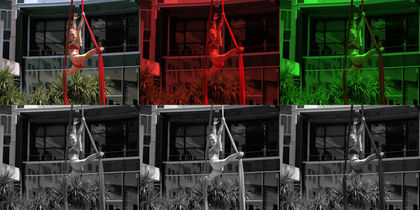
A while back I was reading Ansell Adam about all the business about controlling the darkness of different objects on black and white film using colour filters. I've only even had the slightest play with the idea, and that digitally.
Just tried this with an old shot from a Perilous show at Civic Square, turning down various colour channels as a filter, desaturating and bringing the levels back up to the top. There seem to be exposure issues doing this way compared to sitting with you filters and your large format cameras and your light meters for a few minutes before hitting the shutter.
-
As I understand it a a large proportion of your retina is devoted to detecting texture. Specifically changes in texture; colours don't really matter here because the main goal of detection is to support lcomotion and location. It is possible that much of the difficultly and allure is in capturing pleasing arrays that largely feed the implicit part of our brains.
For me B/W has always punished me most with that "the box didn't capture it" moment.
-
There is a subtle problem with trying to emulate Adams and others work using filters. The spectral response of B&W film is used to enhance the changes. The response of film varies across the visible - and UV and near IR as well. It all depends of what type of film is used. Say for instance, there is a decrease in sensitivity in the red end. Then naturally anything red comes out light on the negative. So if you want to eliminate the blue then stick a no blue filter (which allows red to pass) over the camera and then both the red and the blue is decreased. One from the filter, one from the film response. So the combination of film and filter does the weird things. If I remember correctly the classic is a red filter to darken the skies.??
Digitally, you already have the "data" and you can only cheat. You can't take out "half the red" digitally. That is, the deep red and red get cut evenly, whereas with a filter it can be gradually changed over the red spectrum. By all means use filters with a digtial camera but I suspect there won't be the same effects as B&W film.
The response of B&W film is (or used to be) readily available. We spent considerable time sorting B&W film for our multispectral aerial surveys.
-
-
Lyndon Hood, in reply to
Thanks for that Ross. All that said, you have now got me Googling different ways to cheat... I'm imagining Photoshop photo filter layers are an attempt to mimic actual filters rather than a channel adjustment (and I'd never noticed the option, if my old PS has it). Or a better way for what I was doing above in Photoshop is apparently teh Channel Mixer.
-
David Hood, in reply to
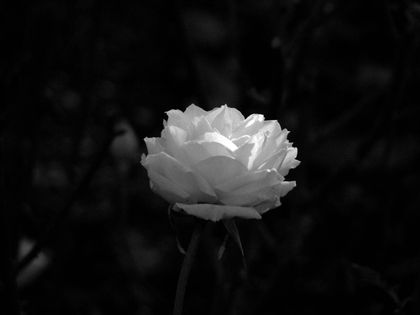
You can’t take out “half the red” digitally
In photoshop and related programs, you apply curves to particular channels (possibly also with some form of fancy selection in place to limit what you effect).
On a semi related note, I discovered the other day that a personal favourite of mine in photo editing software (LightZone) has been made open source (Win/Mac/Linux). I think the ZoneMapper beats Photoshop's curves and it has a bunch of options for black and white conversion
-
-
Does (did) black and white film capture anything more than colour film? I guess, is there anything different between a photo taken on black and white and a photo taken on colour and converted (any conversion process)?
-
When it comes to digital, this is (IMO) the only place that shooting in RAW makes a difference. A RAW version of a file preserves the full colour depth the camera is capable of, then when you convert it down to another format (such as jpg) you can control how much weight to give to different gradations of colour (and by extension, luminosity).
-
Lilith __, in reply to
Does (did) black and white film capture anything more than colour film? I guess, is there anything different between a photo taken on black and white and a photo taken on colour and converted (any conversion process)?
Black-and-white film gives more latitude in processing and printing, so potentially greater tonal range in the result.
-
Nora Leggs, in reply to
A couple of nice wide questions, and I’m sure there will be more technically minded and able people to answer some of that….. I think about an answer and come up against my own technical limitations : )
But in general I could say that each medium has different qualities, a slightly (or very) different way of recording images their qualities are aimed at acheiving good pictures of their type. You can print black and white pictures from colour negs but they are generally rather soft looking as the colour neg is aimed at producing good colour prints. You can scan colour negs/pictures and convert them to black and white digitally and if you are good at using your software, and if the original picture is suitable you can get good results – probably better than photographically printing it as b&w.I don’t know about the more professional digital cameras, but my more compact numbers are geared to producing best quality in colour pictures so all the detail is recorded with this aim. That’s why the monochrome setting seems lack-luster to me – to get a nicer black and white pic out of this setting I’d have to use photoshop or similar, and I’m too lazy.
Leica are making a purely monochrome digital camera where the sensor and processing is geared to capturing black and white images with a range of tones more like a really lovely black and white film. I know I’m not going to get my hands on one of those…. would be nice.
-
Oh, and... nice b&w's everyone - hope you have a whole lot more up your sleeves! Your cat looking like a 40's starlet Lilith : )
-
Lilith __, in reply to
to get a nicer black and white pic out of this setting I’d have to use photoshop or similar, and I’m too lazy.
Try splitting the colour image to RGB and have a look at the separations - often one of these is a lovely contrasty B/W, way better than a greyscale image,
-
Lilith __, in reply to
Your cat looking like a 40’s starlet Lilith : )
Isn't she beautiful? :-) x
-
Jonathan Ganley, in reply to
Leica are making a purely monochrome digital camera where the sensor and processing is geared to capturing black and white images with a range of tones more like a really lovely black and white film.
Leica M Monochrom! Mmmmmmm. With one of these?
-
Hebe, in reply to
Your cat has become sculptural: what colour is s/he?
-
Lilith __, in reply to
-
-
-
-
Hebe, in reply to
Snap. We have Billy, a very similar but very old grey: part British blue.
-
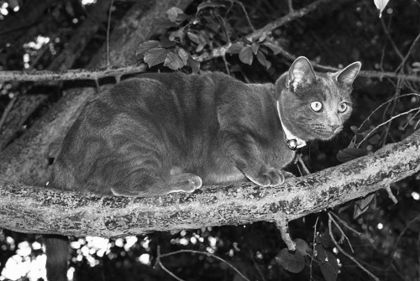



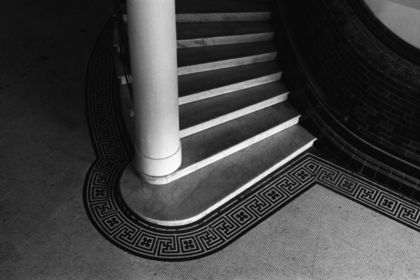

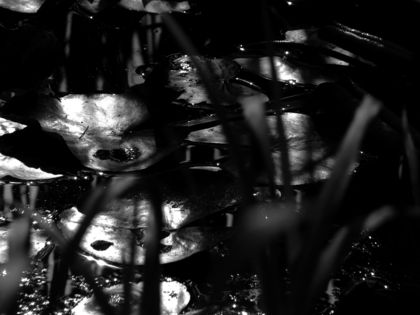
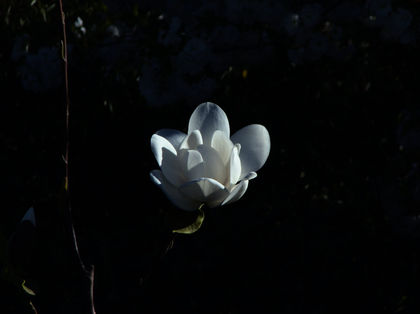

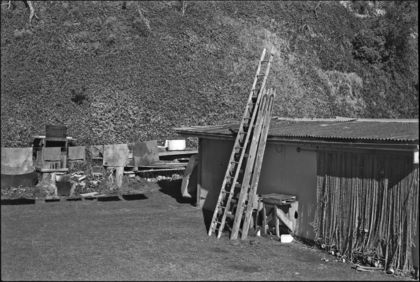
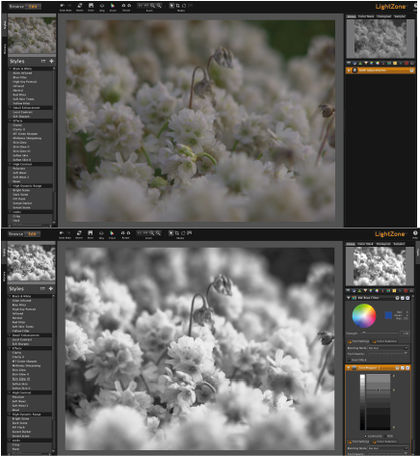
Post your response…
This topic is closed.